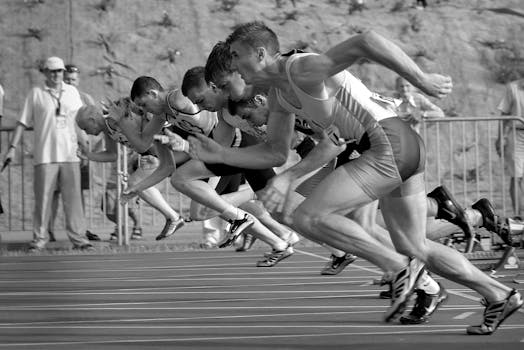Barefoot Running: Benefits and Risks You Should Know
Barefoot running has gained popularity in recent years, with many athletes and fitness enthusiasts advocating for its potential benefits. This running style, which involves running without shoes or with minimal footwear, is rooted in the belief that it can lead to a more natural running form and improved overall health. However, like any fitness trend, it comes with its own set of benefits and risks. In this article, we will explore both sides of barefoot running to help you make an informed decision.
The Benefits of Barefoot Running
Proponents of barefoot running argue that it offers several advantages over traditional running with cushioned shoes. Here are some of the key benefits:
- Improved Foot Strength: Running barefoot can strengthen the muscles in your feet and lower legs. A study published in the journal Footwear Science found that runners who transitioned to barefoot running experienced increased foot muscle strength and flexibility.
- Enhanced Running Form: Barefoot running encourages a more natural gait, often leading to a midfoot or forefoot strike rather than a heel strike. This can reduce the impact on joints and lower the risk of injuries associated with improper running form.
- Increased Proprioception: Running without shoes enhances your sensory feedback from the ground, improving your balance and coordination. This heightened awareness can lead to better overall athletic performance.
- Reduced Injury Rates: Some studies suggest that barefoot runners may experience fewer injuries compared to those who run in traditional shoes. A study in the Journal of Sports Sciences indicated that runners who transitioned to barefoot running reported fewer incidences of knee and hip injuries.
- Connection to Nature: Many barefoot runners enjoy the feeling of connecting with the ground and nature. This can enhance the overall running experience, making it more enjoyable and fulfilling.
The Risks of Barefoot Running
Despite its benefits, barefoot running is not without risks. Transitioning to this style of running requires caution and awareness of potential drawbacks:
- Injury Risk: While some studies suggest lower injury rates, others indicate that transitioning too quickly to barefoot running can lead to injuries such as stress fractures, plantar fasciitis, and Achilles tendonitis. A study in the American Journal of Sports Medicine found that runners who switched to barefoot running without proper adaptation were more likely to sustain injuries.
- Environmental Hazards: Running barefoot exposes your feet to potential hazards such as sharp objects, hot surfaces, and rough terrain. This can lead to cuts, bruises, or burns that may not occur when wearing shoes.
- Adaptation Period: Transitioning to barefoot running requires time and patience. Runners may need to gradually increase their barefoot mileage to allow their feet and legs to adapt. A sudden switch can lead to overuse injuries.
- Not Suitable for Everyone: Individuals with certain foot conditions, such as flat feet or high arches, may not benefit from barefoot running. Consulting with a healthcare professional is advisable before making the switch.
Case Studies and Statistics
Several case studies and statistics highlight the experiences of runners who have transitioned to barefoot running:
- A study conducted by the University of Massachusetts found that 78% of participants who transitioned to barefoot running reported improved comfort and reduced pain.
- In a survey of over 1,000 runners published in the Journal of Sports Medicine, 60% of barefoot runners reported fewer injuries compared to their shod counterparts.
- One notable case is that of ultramarathon runner Scott Jurek, who has successfully completed numerous races barefoot, attributing his success to the strength and resilience developed through this practice.
Conclusion
Barefoot running presents a unique approach to running that can offer numerous benefits, including improved foot strength, enhanced running form, and a deeper connection to nature. However, it is essential to recognize the risks involved, such as potential injuries and environmental hazards. If you are considering transitioning to barefoot running, it is crucial to do so gradually and listen to your body. Consulting with a healthcare professional or a running coach can also provide valuable guidance. Ultimately, whether you choose to run barefoot or in traditional shoes, the key is to find a running style that works best for you and supports your overall health and fitness goals.
